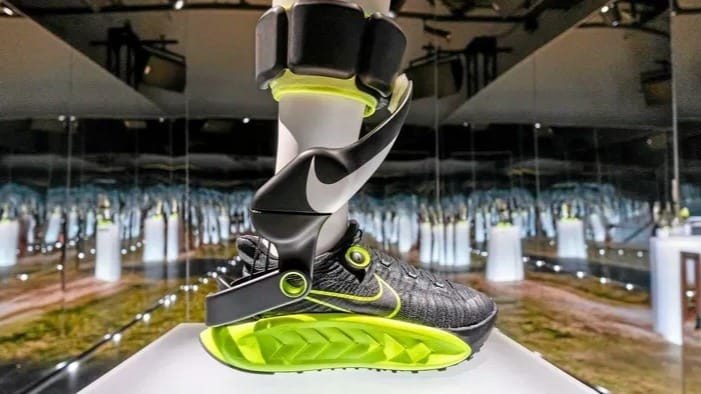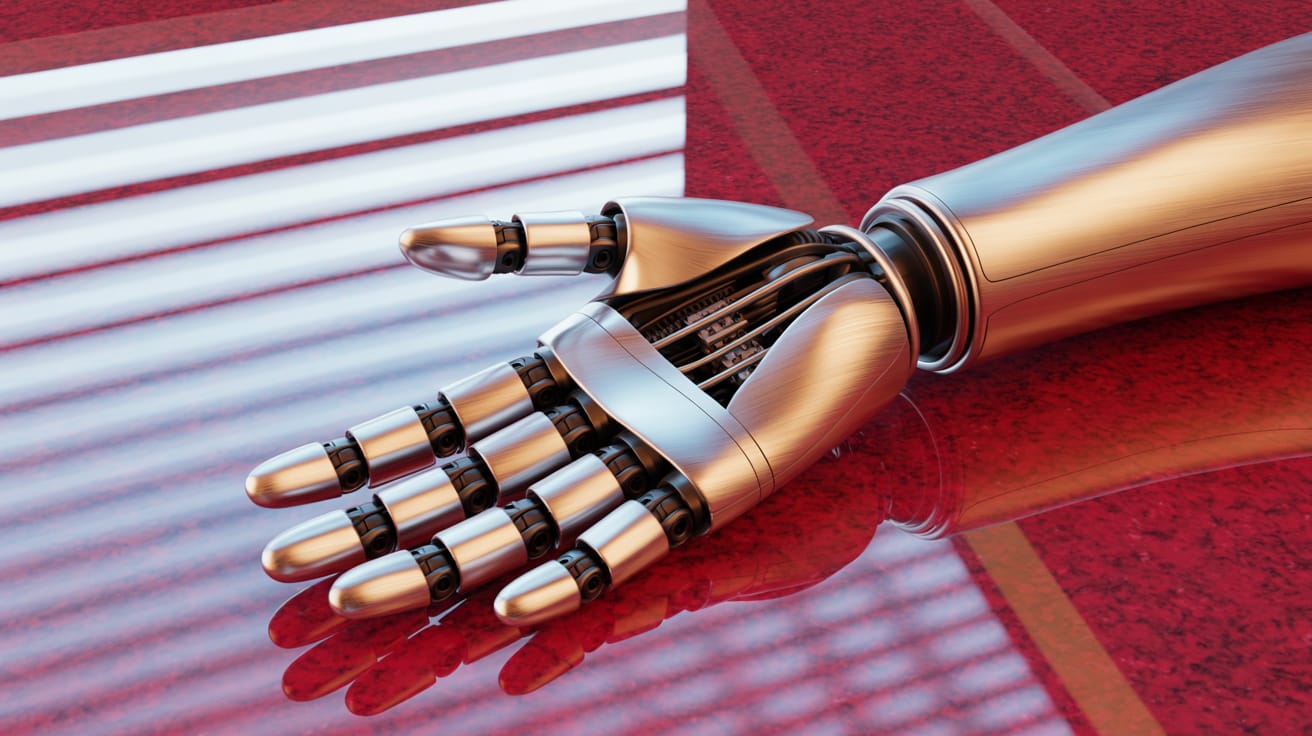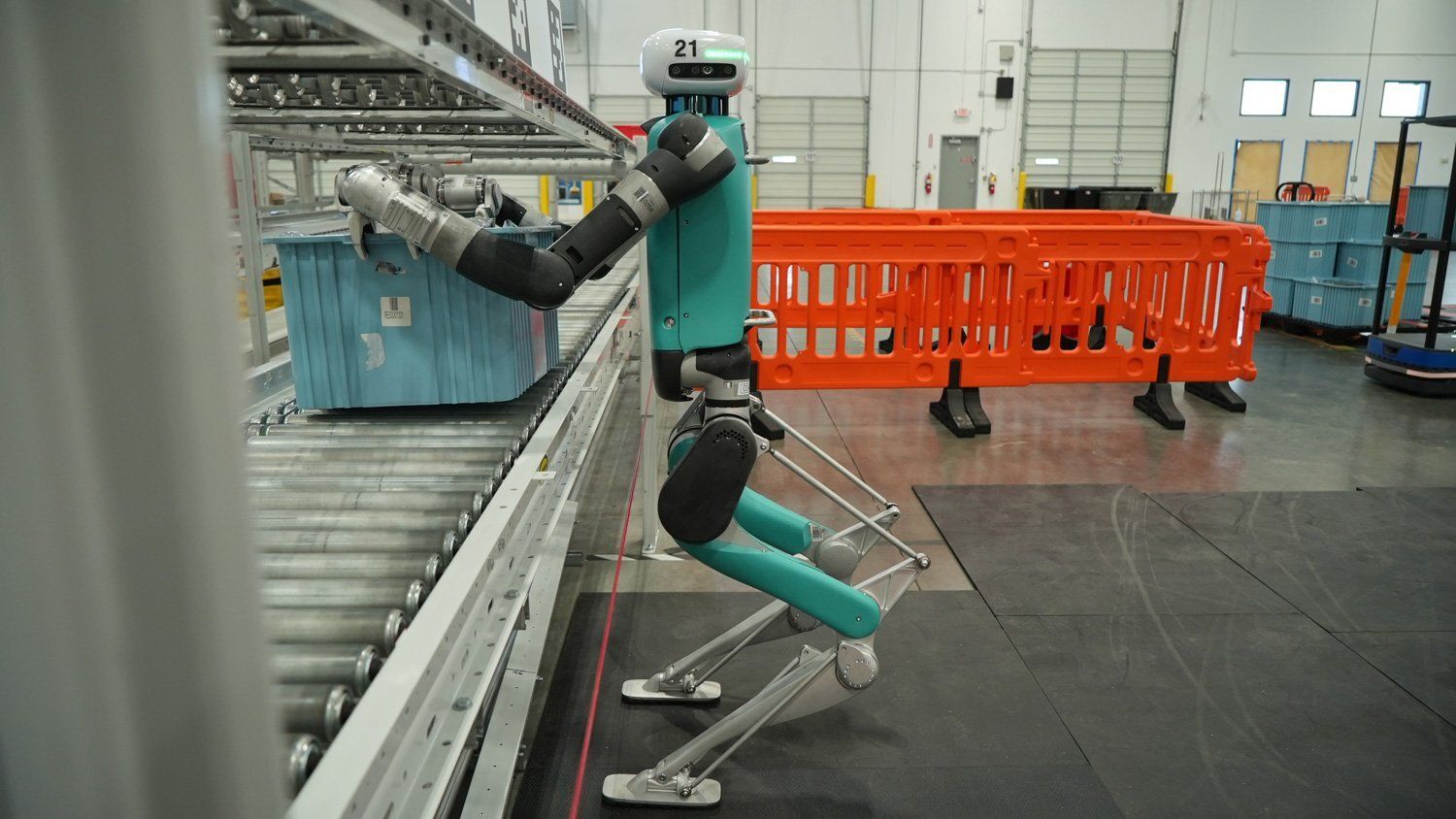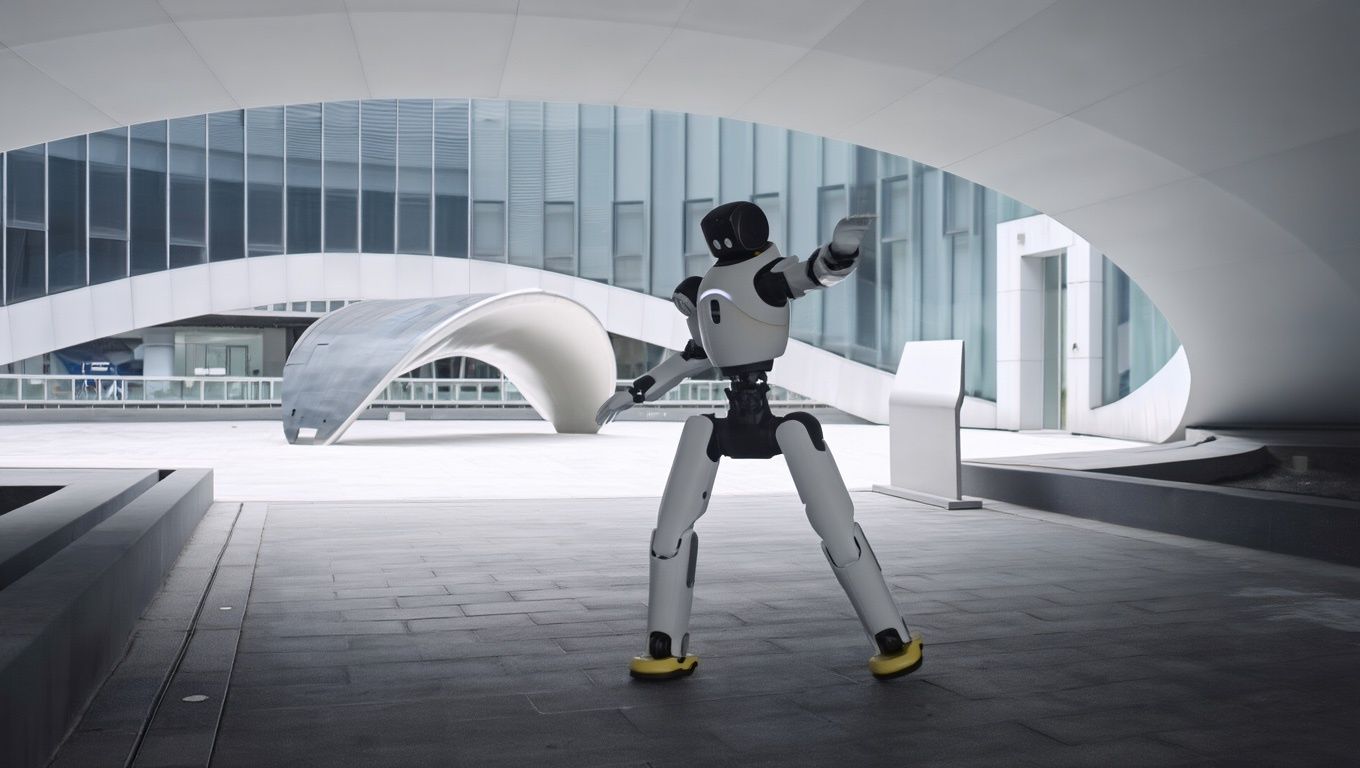- The Rundown Robotics
- Posts
- Nike's robotic sneaker
Nike's robotic sneaker
PLUS: Humanoids' 'hands problem'
Good morning, robotics enthusiasts. Nike just powered up walking. Project Amplify wraps your leg in a robotic brace that adds motor-driven push to every step — think pedal-assist, but for your stride.
It's clunky, conspicuous, and might actually make your walking commute a lot more fun.
In today’s robotics rundown:
Nike’s robot sneaker for power walks
Humanoids have a big ‘hands problem’
SoftBank on the ‘hunt’ for humanoids
AgiBot’s zero-code tool turns video into motions
Quick hits on other robotics news
LATEST DEVELOPMENTS
NIKE

Image source: Nike
The Rundown: Nike just debuted its first “powered footwear” with Project Amplify, a robotic exoskeleton designed to boost your walking speed for faster commutes, like having a second set of calf muscles, Nike says.
The details:
The powered footwear system integrates a lightweight motor, drive belt, and rechargeable cuff battery with a carbon-fiber-plated runner.
A calf-mounted battery feeds a hinged arm into a heel socket, delivering assist at the ankle to help you go faster with less effort in walking and running.
Nike is aiming at everyday athletes rather than elites, targeting roughly 10–12-minute-mile paces and commuter mileage, not race-day PRs.
Still in testing, Nike pegs a broad consumer release to the coming years, with one roadmap pointing to a 2028 launch window.
Why it matters: If Amplify reaches scale, Nike aims to do for walking what e-bikes did for cycling — normalizing motor-assist as everyday infrastructure. The collaboration with robotics startup Dephy marks the jump from shoes that return energy to shoes that inject it, potentially developing a new category of propulsion you strap to your feet.
HUMANOIDS

Image source: Ideogram / The Rundown
The Rundown: Humanoids are moving from demos to factory pilots, but the bottleneck isn’t walking — it’s a “hands problem” that separates show bots from robots that can wrench, wire, and swap tools on real lines, reports the Wall Street Journal.
The details:
Current humanoids can walk and lift, but lack the finger‑level dexterity, tactile sensing, and in‑hand control needed to wrench, wire, and swap tools.
Teams are splitting on strategy: some chase five-finger dexterity with touch sensing, others bet on optimized three-finger grippers or two-finger pincers.
Engineers point to hard limits in actuators, tendon routing, compliant joints, tactile "skin," and AI that can fuse vision with millisecond-accurate control.
Morgan Stanley estimates that cracking the hands problem could unlock a $5 trillion humanoid market by 2050, spanning industrial and service roles.
Why it matters: Even as bots like Agility's Digit haul bins in warehouses, researchers say hands capable of skilled tool use are years away, not months. Grasping and in-hand control — not locomotion — will decide which humanoids actually scale beyond logistics into the work that requires real manipulation.
SOFTBANK

Image source: Agility Robotics
The Rundown: SoftBank is reviving its robotics ambitions with targeted stakes in both humanoid hardware and AI — joining Agility Robotics’ reported $400M round, backing platforms like Skild AI, and agreeing to acquire ABB’s robotics unit for $5.4B.
The details:
It explored a $900M Agility Robotics buyout but instead joined a funding round reportedly near $400M at a ~$1.75B valuation.
SoftBank agreed to buy ABB’s robotics unit for about $5.375B, with closing targeted for mid‑to‑late 2026.
Softbank’s Masayoshi Son is reportedly intensifying the pursuit of investments in humanoid startups as its next growth engine beyond software.
Competitive pressure is mounting as Tesla, Figure, and Boston Dynamics head into pilots while Agility’s Digit scales enterprise trials and capability upgrades.
Why it matters: A decade after SoftBank's "emotional" bot Pepper flopped, the conglomerate is hunting for AI-robotics bets that can actually scale — this time hedging with equity stakes and supply agreements instead of outright acquisitions. If pilots turn into purchase orders, SoftBank sits first in line for units and partnerships.
AGIBOT

Image source: AgiBot
The Rundown: China’s AgiBot launched LinkCraft, a zero‑code “robot director tool” that turns smartphone videos of dances, martial arts, or everyday gestures into precise humanoid motions — no specialized gear or coding required.
The details:
It blends AI motion capture, intelligent retargeting, and cloud imitation learning to map 2D video into 3D robot control trajectories for live performances.
A timeline editor lets creators sequence actions, audio, and expressions, while ‘Speech Choreography’ auto-syncs facial movements from text or voice input.
Multi-robot ‘Group Control’ deploys synchronized routines across multiple units, and a built-in library supplies 180+ actions and 140 expression templates.
It launches on the X2 humanoid and will roll out to A2 and other platforms, aligning with AgiBot's push from demos to real-world deployments.
Why it matters: LinkCraft removes the programming barrier that has confined humanoids to labs and controlled demos. Now, just a smartphone video is enough to program motion. If the tool works as advertised, it shifts the model from engineers scripting every gesture to end users in the driver’s seat.
QUICK HITS
Meta’s AI chief, Yann LeCun, warns the humanoid boom is prioritizing hardware over cognition, saying most startups have “no idea” how to make robots generally useful.
GM promised “eyes-off” driving for 2028, debuting on the Cadillac Escalade IQ, backed by 600K mapped hands‑free miles and 700M crash-free Super Cruise miles.
Grubhub is rolling out a Jersey City pilot with Avride to deliver Wonder orders via sidewalk robots, the company’s first autonomous delivery effort beyond campuses.
A UK-based 16‑year‑old and his father built a four‑finger, tendon‑driven Lego hand that uses a clutch‑gear differential to synchronize digits for adaptive grasps.
Chinese researchers unveiled an “underwater phantom” jellyfish robot that can blend in to conduct covert missions, intelligent detection, and real-time monitoring.
Korean researchers built OCTOID, a bilayer soft robot using elastomers that fuses color-shifting camouflage with programmable shape-morphing for modular locomotion.
Bonsai Robotics unveiled the Amiga Flex, its first unified platform since the July farm-ng acquisition, bringing accessible autonomy to growers who couldn't afford it before.
A Harvard-led study shows how living muscle, integrated with synthetic scaffolds via advanced biofabrication, could power biohybrid robots that flex and adapt like humans.
Russia’s Rosatom unveiled a “spider robot” that ultrasonically inspects reactor and steam‑generator welds up to 30 cm thick three times faster than traditional methods.
Unitree launched an in-person education program built around its Go2 robot dog to teach operation, maintenance, and applications.
Liuyang, China, set a world record with 16K-drone night show that drew millions and showed swarms can outdo fireworks on complexity, runtime, and emissions.
COMMUNITY
Read our last AI newsletter: The 'Meta-fication' of OpenAI
Read our last Tech newsletter: Apple may strike space deal with Musk
Read our last Robotics newsletter: Amazon’s massive robot hiring spree
Today’s AI tool guide: Build a 30-day plan with Manus 1.5 to achieve goals
Watch our last live workshop: Learn Context Engineering
That's it for today!Before you go we'd love to know what you thought of today's newsletter to help us improve The Rundown experience for you. |
See you soon,
Rowan, Jennifer, and Joey—The Rundown’s editorial team
